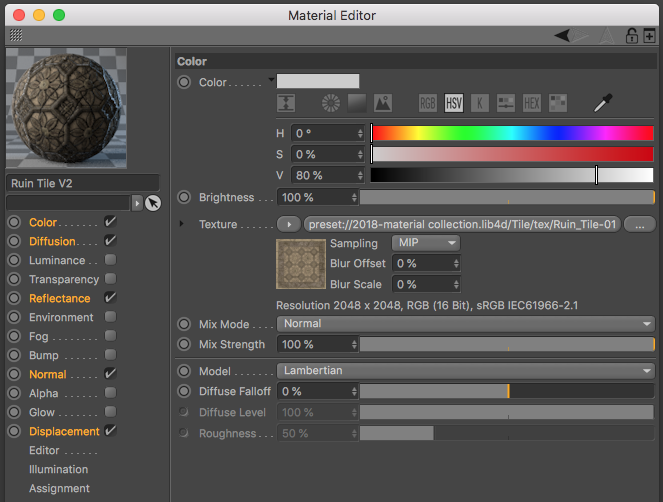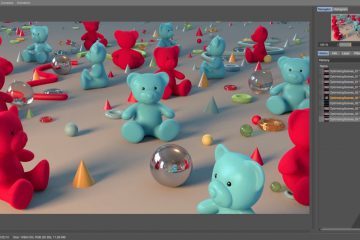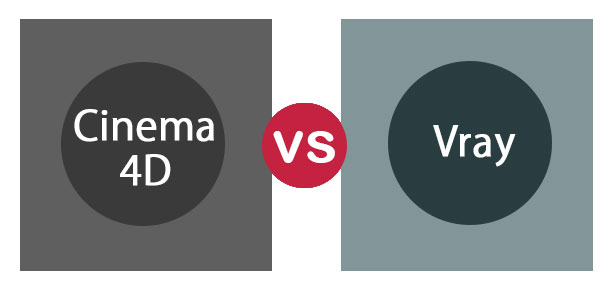

And make up a light on the left side.Īdjust the brightness of the light to the right position. Now you can see that the overall color of the light is white, so you need to adjust the color, first change all the light modes to Temperature, the window light is blue, and the room is warm. Give the material to the model, and the rendering test shows that the model is much brighter. The default material for Cinema 4D will be darker, so before the rendering test, you can create a new Redshift material, adjust the Color Picker up to 70%, and turn off the Weight. The advantage of using three lights separately is that it can be adjusted separately and saves rendering efficiency. In order to match the light source, an Area Light is placed in each window to simulate the skylight. The Primary GI Engine chose Irradiance Cache, and the scone GI Engine chose Irradiance Poince Cloud. The effect in the image below is to use the Octane renderer, which will now be recreated using Redshift.īefore you make the lights, turn on the GI and choose the most appropriate way for this scene. This is a basic case of Redshift's interior rendering, so the case uses an existing interior model, the focus of this case is the lighting adjustment and rendering settings. This time, the CG industry's leading cloud rendering service provider, Fox Renderfarm brings you a case study tutorial of Redshift for Cinema 4D for interior rendering.
HOW TO ADD MULTIPLE LAYERS TO A VRAY MATERIAL CINEMA 4D HOW TO
It’s also easier to manage the shader with fewer layers.Redshift Blender Octane Render render farm for keyshot houdini render farm Houdini Octane for C4D Arnold for Maya SketchUp Cloud Rendering GPU Render Farm Arnold tyFlow C4D Corona render farm Arnold for Blender Clarisse render farm arnold for c4d CG Competition Redshift render farm 3D Rendering CPU Rendering Maya render farm c4d render farm LightWave RenderMan SketchUp render farm Arnold render farm GPU Mining Fox Renderfarm Pokemon: Detective Pikachu Spider-Man: Into the Spider-Verse VFX Vray Captain Marvel Redshift for maya V-Ray for 3ds Max Open Image Denoise Blender render farm Softimage Films Renderman for Houdini Keyshot Disney Movie Bollywood Films Malaysia HPC Aquaman Linux Blender Cycles White Snake The Lego Movie 2: The Second Part Animated Films Cinema 4D Vray Cloud Rendering Redshift for C4D Oscars Mental Ray for Maya GPU Rendering NVIDIA Iray Hum3d Survial Car Challenge V-Ray for Maya Render Farm CGTrader Space Competition cloud rendering Arnold GPU Quixel v-ray for sketchup 3ds Max ArchViz V-ray render farm 3ds Max Tutorials MotionVector China Box Office V-ray cloud rendering Animation Basics Alita: Battle Angel 阿里雲 V-Ray for Blender The Predator The Wandering Earth ZBrush Tutorials enchantedmob Evermotion challenge 2017 Ralf Sczepan How to train your dragon V-Ray Rendering Dumbo 3ds Max Render Farm SIGGRAPH SketchUp hum3d contest Maya Chaos Group CGTS Malaysia Mortal Engines Newsletter Behind The Scenes VAX LuxRender Planet Unknown CG Tech Summit Malaysia Blog Special Effects Top News CG Tech Summit Prooi Evermotion SIGGRAPH Asia Le Anh Nhan Short Films Crow: the Legend Manual Model Aladdin CGTrader Aliyun V-Ray RT Indigo Renderer Monkey Island Makuta VFX boar 2017 Henrik Lein Tomasz Bednarz cloud render farm Animated Movies Rendering Bumblebee Interview Dead Pool Intel 3ds cloud rendering Rendering Live-action Movie 3d Max Render Farm Fox Projects CGTS


Most of the time 4-5 layers should be the absolute maximum to use, with 2-3 being the norm. This means you could quickly get insanely slow rendertimes if you get too carried away. Each new layer makes the render slower, since Vray has to calculate all the materials in the blend and then blend them together. However, in the real world, this is not a practical way to do things. Each layer after Base has a Blend amount Color and Map.īlends can be as complex as you want them to be, You’re not limited to the 10 slots, you can always add another blend in the last layer slot and keep piling on the layers. In fact, they all function in the same way, very similar to layers in photoshop, so really what you get is 10 layer stack. You have a Base material and 9 Coat materials. It does not have any shading options, it just combines multiple other shaders in different ways. The VrayBlendMtl could be best described as an utility material.


 0 kommentar(er)
0 kommentar(er)
